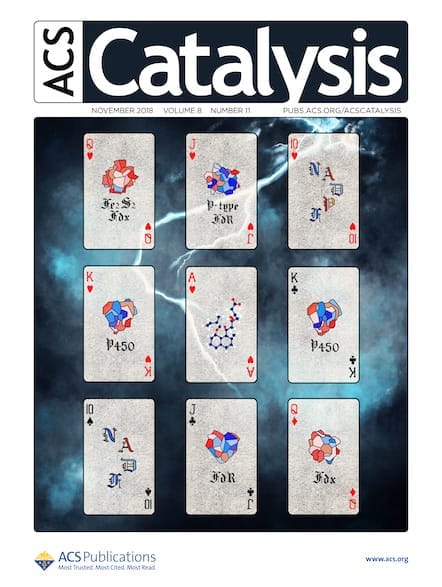Catalytic amounts of 4-iodotoluene dichloride—produced from the reaction of 4-iodotoluene, Selectfluor, and CsCl—can dichlorinate alkenes without using chlorine gas. A catalyst that adds a pair of chlorine atoms to an alkene—using only a chloride salt as its halogen source—could offer a new approach to synthesizing chlorinated natural products. The catalyst is a long overdue update […]

Catalytic amounts of 4-iodotoluene dichloride—produced from the reaction of 4-iodotoluene, Selectfluor, and CsCl—can dichlorinate alkenes without using chlorine gas.
A catalyst that adds a pair of chlorine atoms to an alkene—using only a chloride salt as its halogen source—could offer a new approach to synthesizing chlorinated natural products.
The catalyst is a long overdue update of some classic 19th-century chemistry, says Ryan Gilmour of the University of Münster, who led the work.
Chemists have been adding chlorine gas (Cl2) to carbon-carbon double bonds since the 1870s, hooking chlorine atoms onto adjacent carbon atoms to make vicinal dichlorides. Chlorine gas is tricky stuff to handle though, so researchers often prefer to use substitute reagents that contain chlorine atoms with enough positive charge to be attacked by an alkene’s electron-rich double bond. One of these proxies is iodobenzene dichloride (PhICl2), which German chemist Conrad Willgerodt first produced in 1886 by passing chlorine gas through iodobenzene. “A lot of chlorinating reagents still require elemental chlorine to prepare them, which is not very practical,” Gilmour says.
Gilmour’s team has now developed a catalytic variant of Willgerodt’s reagent that avoids chlorine gas altogether. The researchers blended 4-iodotoluene, cesium chloride, and an oxidizing agent called Selectfluor to generate the 4-iodotoluene dichloride catalyst, which reacts with various alkenes to form vicinal dichlorides in up to 88% yield. The reaction is unaffected by the presence of other common chemical groups within the alkene molecule, including alcohols, esters, and phosphates.
In relying on chloride ions as their sole source of chlorine, Gilmour’s team was inspired by nature. Chloroperoxidase enzymes can oxidize chloride to produce the equivalent of Cl+, which is ultimately responsible for many natural organochlorine compounds. “We were trying to create a system that would imitate how biology generates carbon-chlorine bonds,” Gilmour says. Although they are still figuring out the mechanism involved in forming their catalyst, the researchers think that Selectfluor oxidizes 4-iodotoluene’s iodine atom into its +3 oxidation state, which then picks up chloride anions, readying them for the alkene’s attack.
Some species of mussel produce chlorinated lipids carrying the vicinal chloride motif. These lipids can cause seafood poisoning. The dichlorination catalyst could help to produce analogs of these compounds to explore their biological activity, Gilmour suggests.
“If people are afraid of using chlorine, then this method may have an advantage,” says Scott E. Denmark of the University of Illinois at Urbana-Champaign, who developed a selenium-based syn-dichlorination catalyst a few years ago. However, he notes that reagents like Selectfluor and cesium chloride are a lot more expensive than chlorine gas.
Gilmour is now developing a version of the catalyst that offers enantioselective dichlorination of terminal alkenes, a degree of stereocontrol that is rare in dichlorination reactions. “It’ll really catch more attention if it can be done enantioselectively,” Denmark says.
The researchers have already tried a chiral aryl iodide as the basis of their catalyst, and found that it produces a promising 2:1 ratio of enantiomers in its reaction with 4-chlorostyrene. Improving on that “is going to be a real challenge,” Denmark says. “But I would never bet against Ryan.”
This article is reproduced with permission from C&EN (© American Chemical Society). The article was first published on July 30, 2019.
